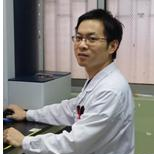In Memory of Jianguo Wu
A special issue of Viruses (ISSN 1999-4915). This special issue belongs to the section "General Virology".
Deadline for manuscript submissions: closed (31 October 2023) | Viewed by 14858
Special Issue Editors
Interests: viral infection and replication; immune escape; inflammation
Interests: HBV; EV71; ZIKA; inflammation; antiviral drugs
Interests: HIV infection; persistent infection; viral infection and immune dysfunction; HIV biology; retrovirology
Interests: molecular diagnostics; real-time PCR; point-of-care test; virology; virus-host interaction; pathogen surveillance; molecular epidemiology; emerging viruses
Special Issue Information
Dear Colleagues,
Prof. Jianguo Wu’s contributions to Medical Virology were both significant and wide-ranging. He and his group at Wuhan University and Jinan University uncovered multiple important pathological mechanisms during the infectious diseases of several medical viruses, including HBV, HCV, HIV, EV71, DENV, ZIKV, SARS, and SARS-CoV-2. His pathological studies identified many key virus and host factors that dominate the inflammatory responses, immune regulation, or viral replication during viral infections. In addition to infection pathology, he was also responsible for significant achievements in the fields of virus epidemiology, vaccines, antiviral therapies, tumor immunology, and so on.
Sadly, Prof. Jianguo Wu passed away in October 2022. We miss his generosity in sharing reagents and methods and would like to use this opportunity to commemorate his disposition in sharing new ideas and participating in collaborative research studies. In honor of his work and scientific legacy, Viruses has set up this Special Issue which will contain articles by those who knew and worked with Wu and will cover different aspects of medical virology.
Prof. Dr. Yingle Liu
Dr. Kailang Wu
Dr. Yong Feng
Dr. Weiyong Liu
Dr. Yongkui Li
Guest Editors
Manuscript Submission Information
Manuscripts should be submitted online at www.mdpi.com by registering and logging in to this website. Once you are registered, click here to go to the submission form. Manuscripts can be submitted until the deadline. All submissions that pass pre-check are peer-reviewed. Accepted papers will be published continuously in the journal (as soon as accepted) and will be listed together on the special issue website. Research articles, review articles as well as short communications are invited. For planned papers, a title and short abstract (about 100 words) can be sent to the Editorial Office for announcement on this website.
Submitted manuscripts should not have been published previously, nor be under consideration for publication elsewhere (except conference proceedings papers). All manuscripts are thoroughly refereed through a single-blind peer-review process. A guide for authors and other relevant information for submission of manuscripts is available on the Instructions for Authors page. Viruses is an international peer-reviewed open access monthly journal published by MDPI.
Please visit the Instructions for Authors page before submitting a manuscript. The Article Processing Charge (APC) for publication in this open access journal is 2600 CHF (Swiss Francs). Submitted papers should be well formatted and use good English. Authors may use MDPI's English editing service prior to publication or during author revisions.
Keywords
- antiviral innate immunity
- inflammatory network
- viral pathogenicity
- inflammasome
- infection innovation








